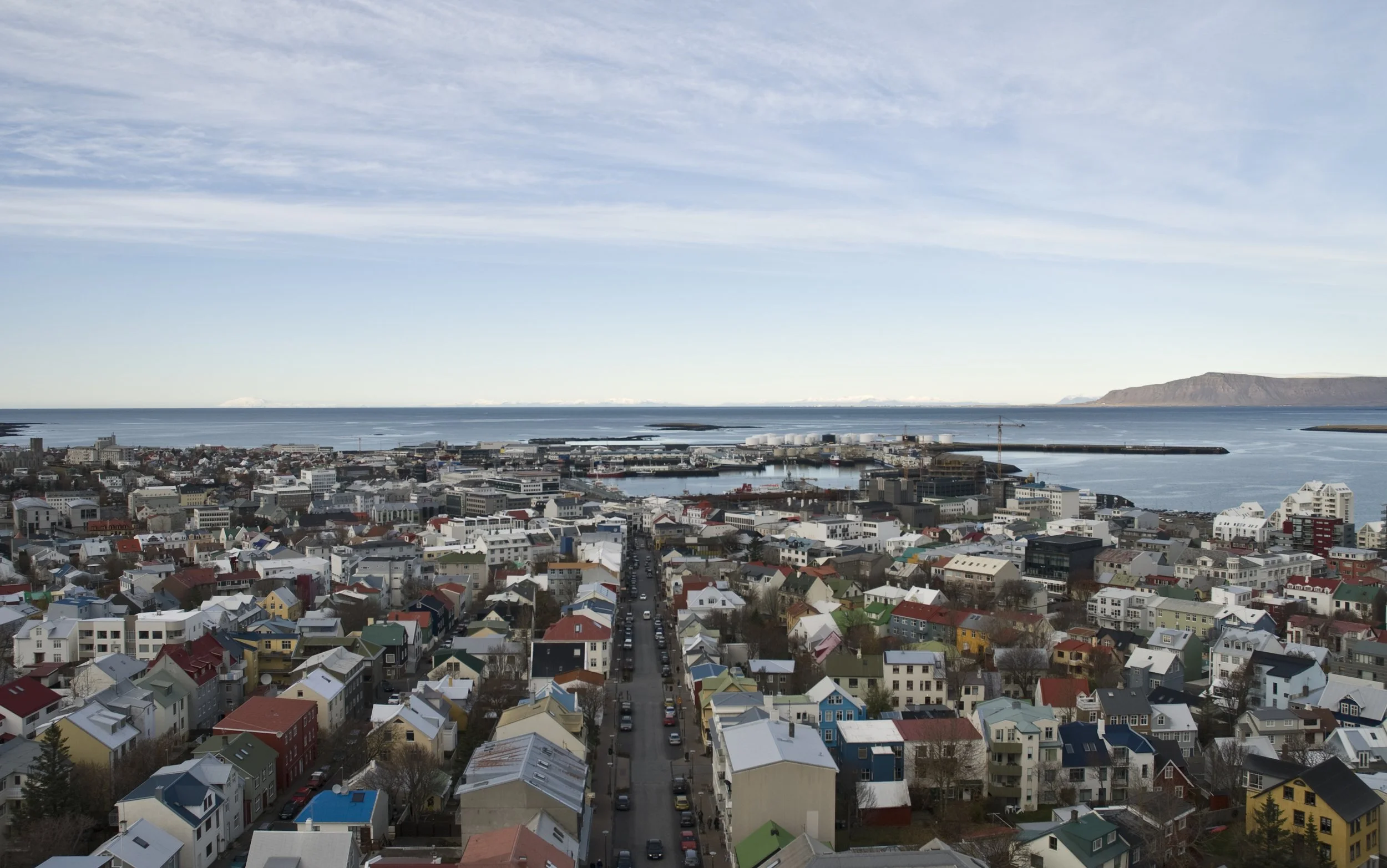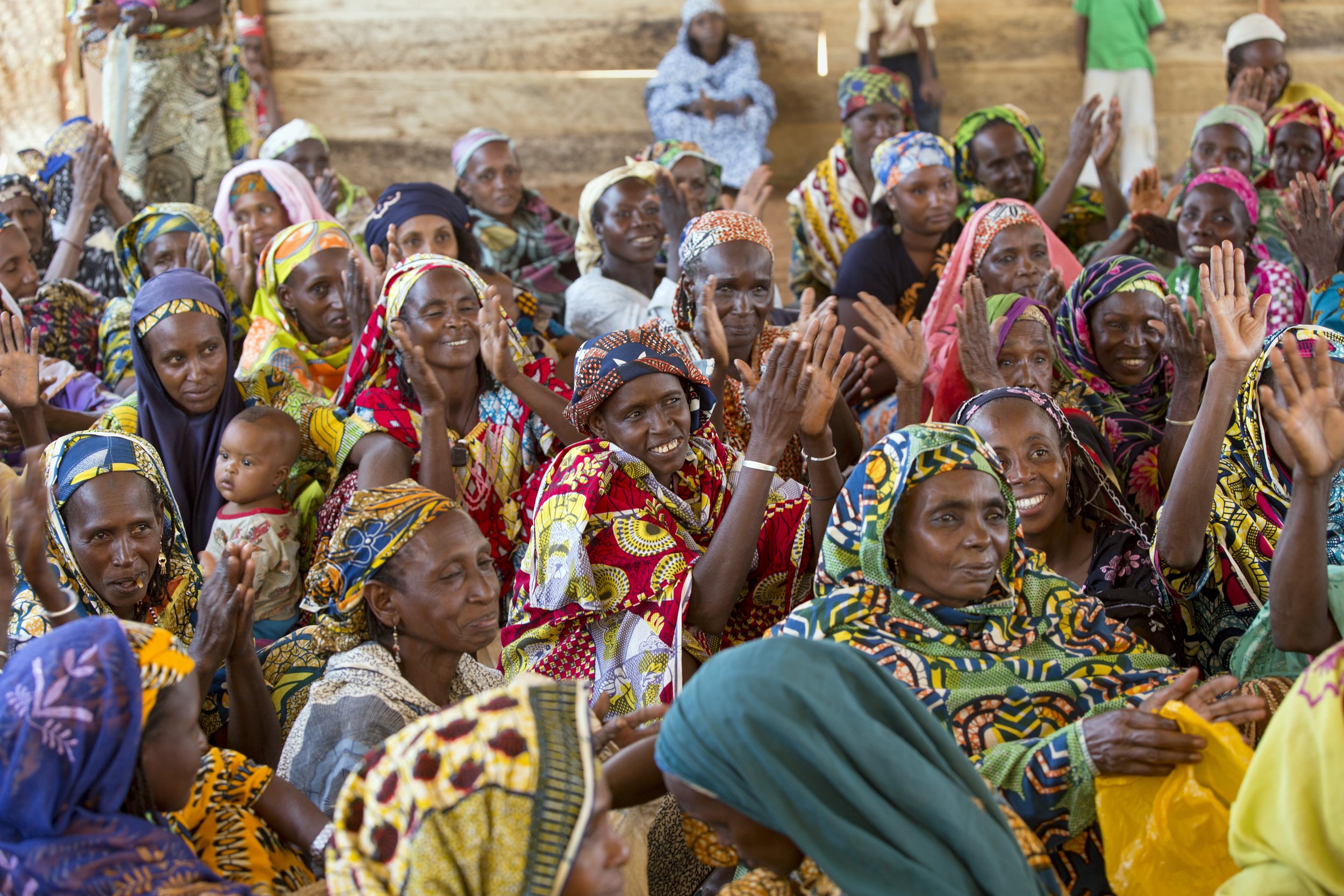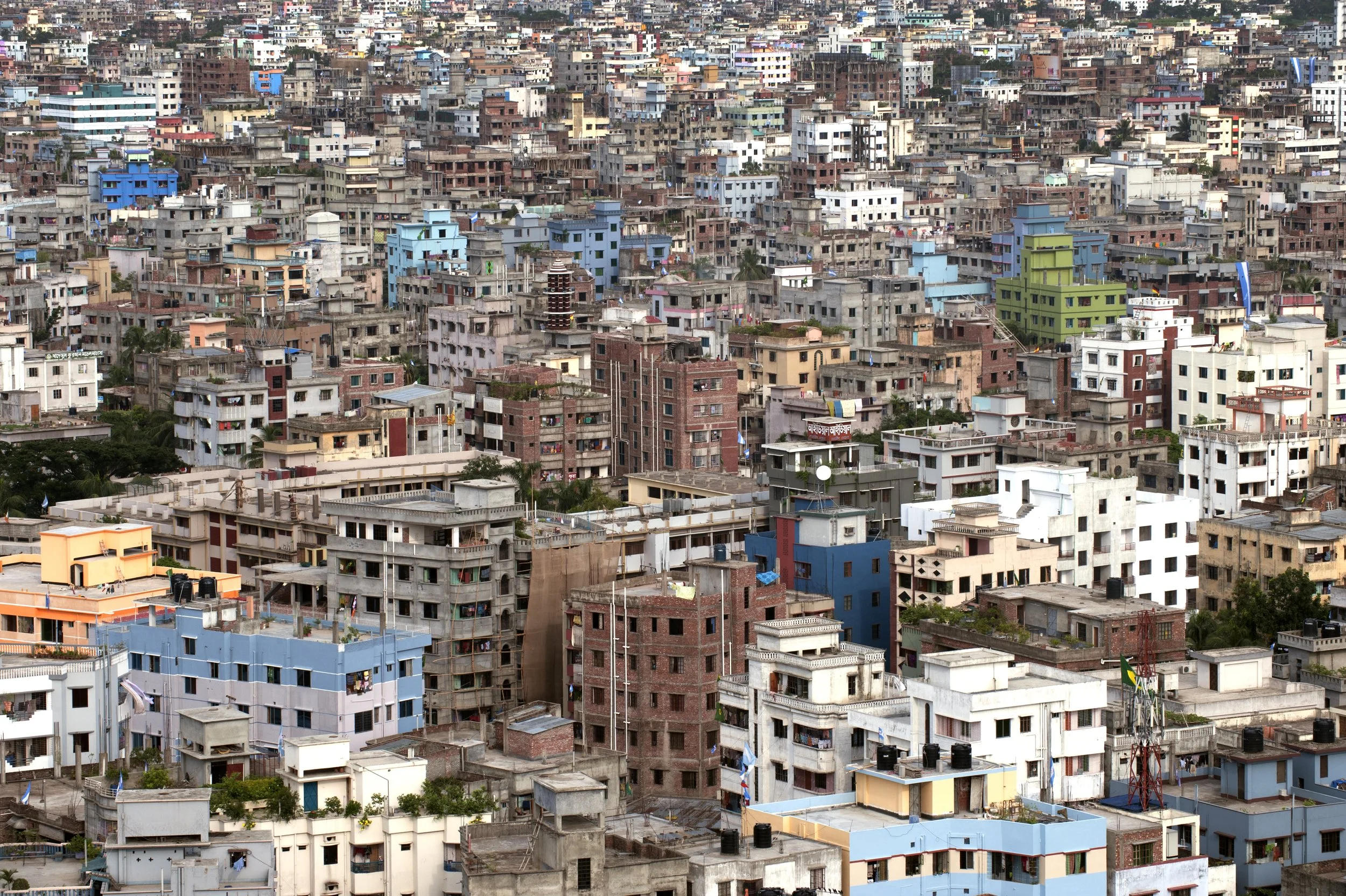Hope Zhu
The World Economic Forum's Global Social Mobility Report 2020 unfolds a gripping narrative.
Income disparity is the cause of social stratification. Steven Depolo. CC BY 3.0 DEED
Have you ever wondered about the likelihood of moving up the social hierarchy, even if you were born into a less advantaged position? This is where the notion of social mobility comes into play. While the understanding and implications of social mobility can differ, at its core, it represents the potential for individuals to improve their socio-economic status relative to their current position in society. In nations with robust social mobility, individuals from more modest beginnings have an increased likelihood of attaining a higher social status.
With this concept in mind, the calculation of social mobility takes center stage as a vital concern. Social mobility encompasses two primary facets: horizontal and vertical. Horizontal mobility takes place when an individual changes jobs while maintaining their overall societal status, often occurring when transitioning between similar occupations. Conversely, vertical mobility represents the movement from a lower societal position to a higher one, or vice versa.
The World Economic Forum, an international non-governmental organization advocating for multinational corporations, presented its Global Social Mobility Report for 2020, assessing and ranking 82 countries. This comprehensive report evaluated five critical indicators: education, access to technology, healthcare, social safety nets, and employment opportunities. In this examination, we will delve into some of the countries that secured the highest and lowest positions in the report, exploring the economic, historical, and societal factors that shape their levels of social mobility.
Countries with the highest social mobility ranking
Interestingly, the top five nations boasting the highest social mobility—Denmark, Norway, Finland, Sweden, and Iceland—all hail from the Nordic region and thrive under the welfare-state model. This system, blending free-market capitalism with significant wealth redistribution, ensures free public services like education and healthcare, along with substantial pension payments for retirees. The Scandinavian countries owe much of their model's success to a relatively flat social hierarchy, shared history, societal evolution and cohesive societies. In contrast, North American nations like the United States and Canada, despite promoting upward mobility, deviate due to their resistance to extensive government programs and high tax rates seen in Europe, resulting in a distinct welfare landscape that differs significantly from the Nordic model.
1. Denmark-85.2
The capital of Denmark. rawpixel.com. CC0 1.0 DEED
Denmark has earned its top ranking in social mobility due to its outstanding performance in various metrics, particularly in the context of low-income families reaching median income. Assuming constant relative social mobility across these countries, Denmark stands out, with an estimated two generations needed to reach median income, as opposed to six in France. This achievement contributes to lower income inequality in Denmark. With a remarkable score of 82.7 and a third-place ranking on the Fair Wages pillar, Denmark offers a healthcare system that is both high quality and equitable. The national government allocates block grants from tax revenue to regions and municipalities responsible for healthcare provision. Every registered Danish resident is automatically enrolled in publicly funded healthcare, which is largely free at the point of use. Registered immigrants and asylum seekers are also covered, while undocumented immigrants have voluntary access to acute-care services. Denmark also excels in social protection, which involves subsidized day care, special support to children, young people and their families and robust housing allowance. Denmark ranked third in this category. This achievement is rooted in the long-standing trust within Danish society and the "universal welfare model," where all citizens are entitled to fundamental welfare benefits and services solely based on their citizenship. This model is designed to support the integrated capitalist market economy that characterizes Danish society.
2. Norway - 83.6
Skyline in Bergen, Norway. Jim Trodel. CC BY-SA 2.0
Norway, another Nordic nation, secures the second position in the realm of social mobility. Boasting low income inequality and an astonishing ability to reach median income within just two generations, Norway stands out prominently in the global landscape, particularly in its robust social safety net, where it ranks fourth worldwide. What sets Norway's social safety net apart is its commitment to maintaining high living standards and minimizing income disparities. For instance, daycare expenses for a family with three children total around $1,100 per month, significantly less than market rates. Education is entirely free at all levels and most Norwegian public, government-funded institutions have no tuition fee. Educational attainment is exceptionally high due to Norway's longstanding commitment to ensuring that all young people complete 13 years of formal schooling. Consequently, Norwegian residents are known for their outstanding workforce participation rates. Furthermore, active participation in various groups and associations enriches Nordic culture, fosters democracy and enhances the overall quality of life. Norway's reputation as "a secure and transparent place to do business," as indicated by the 2021 Heritage Index of Economic Freedom, is a testament to its fair legal system, transparent laws, and political stability.
3. Finland - 83.6
A market in Finland. City Clock Magazine. CC BY-NC-SA 2.0
Finland secures the third spot in global social mobility, largely attributed to its relatively high income mobility. This means that being born into a wealthy family in Finland provides some advantage, but the impact on a child's future earnings is fairly low. For example, a doubling of parental income in Finland leads to a 15% increase in future salary, in stark contrast to 50% for the United States and 60% for China. Finland prides itself on its inclusive education system, ranking second worldwide. Irrespective of their educational needs or abilities, all students are typically taught in the same classrooms. Only children with the most significant educational requirements receive instruction in special classes or schools. Additionally, Finland takes pride in its robust social protection coverage, which extends to both those who work in the country and permanent residents. This comprehensive system supports individuals during parenthood, encompassing maternity, paternity, and parental allowances, as well as allowances for parents raising sick or disabled children.
4. Sweden - 83.5
Stockholm City Hall, Sweden. Stefan Lins. CC BY 2
Sweden, a Scandinavian nation, exhibits generally high intergenerational social mobility, which pertains to the link between a parent’s socioeconomic status and that of their child. A century ago, Sweden had relatively low levels of wealth redistribution compared to other European countries, and even higher income inequality than the United States. Nonetheless, Sweden’s rising social mobility as a welfare state can be attributed to high rates of internal migration and the robust economic growth of its pre-World War I economy. In the early 20th century, Sweden began developing its welfare state, and between 1945 and 1975, it expanded significantly. The “Swedish Model” gained prominence during this period due to its consistently growing economy, neutral stance in World War II, and a populace with similar cultural backgrounds. Nevertheless, Sweden’s welfare state and its measurement of social mobility have faced criticism for promoting substantial tax cuts, reducing funding for welfare programs, and increasing the involvement of private businesses in delivering public services. Studies examining surnames associated with the upper class have revealed that conventional methods tend to overstate the rates of underlying social mobility. Remarkably, the Swedish aristocracy from the 1700s still maintains its elite status, albeit while slowly being dissolved into the broader population.
5. Iceland - 82.7
Reykjavik, Iceland.Berit Watkin. CC-BY 2.0
Iceland stands out for its impressive track record of achieving high social mobility, and a significant contributing factor to this success is its established family policy. The support for women working outside the home has been ingrained in Iceland's family policy for an extended period. Consequently, the country boasts one of the highest rates of female labor force participation globally, reaching 75% in 2020. In terms of gender equality, Iceland surpasses many other nations, demonstrating a lower male-female disparity. The equitable distribution of the burden of child rearing between genders is another notable outcome of Iceland's family policy, where factors such as kindergartens and parental leave play pivotal roles. In Iceland, a child is entitled to an impressive 12 months of parental leave, with six months allocated for each parent, of which six weeks are shareable. Additionally, the impact of housing costs is minimized, as only 25% of low-income families pay more than 40% of their income for housing. Iceland also takes pride in providing its citizens with access to technology. The country maintains its top position globally in preserving internet freedom, ensuring nearly universal connectivity, minimal restrictions on internet content, and robust online rights safeguards. In 2021, an outstanding 98.36 percent of households in Iceland had internet connectivity.
Countries with the lowest social mobility ranking
Nations experiencing lower social mobility worldwide are predominantly situated in the global South, and are marked by economic stagnation, political instability and a recurring history of socioeconomic segregation. These challenges establish a pernicious cycle, particularly in Africa and Middle Eastern countries, significantly impeding the upward mobility of underrepresented communities. The struggle arises from a complex interplay of factors, making it imperative to address economic disparities, political turmoil, and historical injustices for sustainable improvement.
1. Cote d'Ivoire - 34.5
Côte d'Ivoire, Ghana border post. jbdodane. CC BY-NC-ND 2.0
In the past two decades, Cote d'Ivoire, a West African jewel boasting beach resorts, rainforests, and a French-colonial legacy, grapples with persistent inequalities. These disparities are discernible in the landscape, from the prevalence of luxury items and expensive furniture stores to the emergence of French supermarkets, which are confined to the purview of the well off. The social and economic fabric of the country is intricately woven by centuries of cross-cultural influences, trans-Saharan and coastal trade, and local innovations. The imposition of colonial rule and the shift to independence disrupted established patterns of life, leading to societal and cultural transformations by the 1980s, shaped by responses to disruptions and government policies. Inequality is caused especially by access to power, drinking water, education, housing style and place of residence (urban or rural residence). The Ivory Coast's middle class, primarily prosperous farmers, traders, and professionals in administration, education and healthcare, remains a small minority.
2. Senegal - 36.0
Saint-Louis, Senegal. World Bank Photo Collection. CC BY-NC-ND 2.0
Nestled in West Africa, Senegal emerges as one of the countries grappling with limited social mobility. During the colonial era, significant earnings from major companies favored foreigners and the local nobility. Post-independence, the government's nationalization initiatives favored a privileged few, sparking a renewed struggle for status and authority. In line with other Sub-Saharan African nations, Senegalese societies, rooted in shared traditions, perceive hierarchy as fundamental to their political and economic organization. Senegal’s largest ethnic groups, despite cultural disparities and historical tensions, share a caste-based social structure with distinct roles. In Dakar, for example, seeking employment for respect and authority, urban males frequently base their decisions on class perceptions. The economic challenges faced by young men often translate into prolonged singleness, as expectations for traditional roles remain unmet. However, the prevalence of inexperienced and illiterate workers, coupled with limited job opportunities, often hinders the ability to challenge labor code violations, resulting in subpar working conditions. Despite these challenges, Senegal modestly progressed in addressing the worst forms of child labor in 2022, collaborating with the United Nations Office of Drugs and Crime to establish new procedures for identifying and investigating human trafficking incidents.
3. Cameroon - 36.0
UN Women Humanitarian Work with Refugees in Cameroon.UN WomenFollow. CC BY-NC-ND 2.0
In the heart of Central Africa, the city of Cameroon unfolds as a captivating tale of social dynamics, shaped by the rich tapestry of cultural, religious, and political traditions. Post-World War I, the nation was carved into British and French mandates, giving birth to the intriguing Anglophone region in the Southwest and Northwest Regions. Here, Pidgin English takes center stage as the lingua franca, while the echoes of English education and legal systems resonate. Meanwhile, for many ethnic groups in Cameroon society is tied together by a hierarchical social structure that encompasses various groups, from royalty to slaves, within conventional norms. As traditions intersect with contemporary realities, Cameroon's health landscape emerges as a pivotal chapter. Despite commendable drops in leading causes of death like HIV/AIDS and malaria, geographic imbalances persist. A substantial 70% of regions grapple with acute shortages in health personnel, with ratios plummeting below 1.5 per 1,000. The departure of 232 physicians and 205 nurses from the public sector underscores the challenges, tied to unfavorable working conditions and constrained career pathways.
4. Pakistan - 36.7
Pakistan. Asian Development Bank.CC BY-NC-ND 2.0
In Pakistan’s 2020 National Human Development Report, the UNDP explores The Three Ps of Inequality: Power, People, and Policy. It unmasks elite strategies for systemic control, disclosing that productive elites inflicted a staggering $6.34 billion in economic losses on the manufacturing sector in the fiscal year 2017–2018. The military dominates the country, establishing extensive corporate empires, fortifying against citizen uprisings and exerting control over elections. Much like its subcontinental counterpart Bangladesh, Pakistan also grapples with substantial challenges in achieving educational quality and equity, notably in the student-to-teacher ratio across all educational levels. The country is marred by corruption and contends with a lack of political stability and protection from violence — essential elements for constructing inclusive institutions that can benefit all citizens. A formidable learning poverty issue persists, with a staggering 75% of the population affected. This stark reality is reflected in the disappointing allocation of only 2.0% of its GDP to education, while a considerable 4% is directed toward defense. The historical emphasis on Islamic ideology and fundamentalism further complicates the educational landscape. The challenges are further exacerbated by the compounding impact of COVID-19 and the 2022 floods. According to the Human Capital Review, to ensure the retention of all children in school and enhance the quality of instruction, Pakistan would need to allocate an unprecedented 5.4 percent of its GDP — an unimaginable financial burden for the majority of Pakistani families.
5. Bangladesh - 40.2
View of Dhaka, Bangladesh. United Nation Photos. CC BY-NC-ND 2.0
Social stagnation has emerged as a pressing concern in Bangladesh, primarily due to the inadequacy of education resources. Bangladesh received the lowest score in Lifelong Learning, particularly highlighting deficiencies in level of employee training, policies for the active labor market, and the digital literacy rate among the active population. In 2019, The Human Capital Project delved into the learning poverty situation, defining it as the inability to read and comprehend a brief paragraph by the age of ten in Bangladesh. The findings were alarming, indicating that a significant 55% of children in the country fall below the minimum proficiency level. Additionally, less than 12% of the population enrolled in colleges or universities in 2010. The absence of a standardized curriculum for teachers in Bangladesh adds a layer of complexity to the education system, compounded by a scarcity of highly qualified teachers capable of instigating transformative changes. Another challenge stems from the severe impact of climate change, particularly on global south countries like Bangladesh. Extreme weather events, such as floods, cyclones, and hurricanes, pose a threat to school operations, infrastructure, and the displacement of students and teachers. Bangladesh Education Statistics reveal that a staggering 25,430 educational institutions are situated in disaster-prone locations. Children in these areas, especially those with disabilities and from impoverished backgrounds, are at a heightened risk of being excluded from educational opportunities.
The potential to ascend the social hierarchy rests on personal merit, yet is intricately linked to the political, societal and economic system that allows individuals to navigate their wealth and social status. In analyzing countries with the highest and lowest social mobility, these variables may not fully capture each individual's likelihood of success, as they are also influenced by factors like a nation's size and social cohesion (as evidenced in Nordic countries). Nonetheless, this exploration sheds light on the push and pull dynamics guiding physical mobility across various corners of the world.
Hope Zhu
Hope is a Chinese international student at Wake Forest University in North Carolina studying sociology, statistics, and journalism. She dreams of traveling around the globe as a freelance reporter while touching on a wide range of social issues from education inequality to cultural diversity. Passionate about environmental issues and learning about other cultures, she is eager to explore the globe. In her free time, she enjoys cooking Asian cuisine, reading, and theater.












